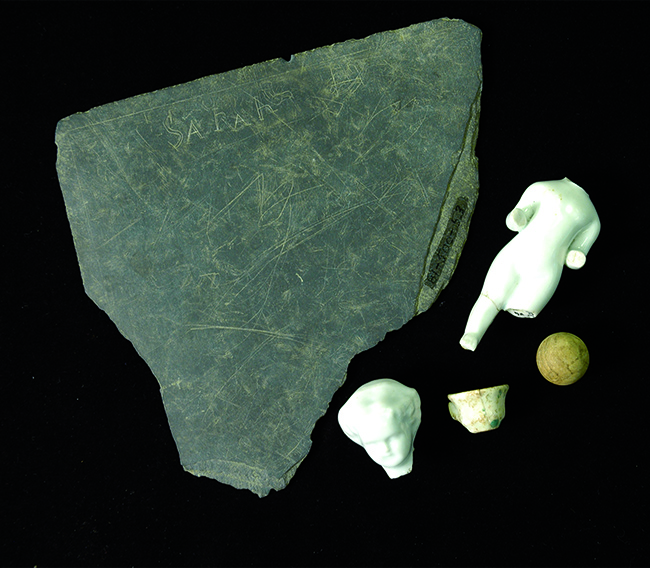
A writing slate fragment found in the Sanders House backyard during the 1981 excavations at Historic Washington Arkansas State Park. This slate is of particular interest because a picture of a house, the number “44” in three different locations, and the name “Sarah” have been permanently scratched into its surface.
By Leslie C. “Skip” Stewart-Abernathy and Jamie C. Brandon
Artifact of the Month - March 2018
A piece of gray slate was found in an excavation unit on the 5th of July, 1981 during archeological investigations in the backyard of the Sanders House in Historic Washington Arkansas State Park in southwest Arkansas. The slate fragment is roughly triangular, and measures 14.2 x 15.3cm. It was once part of a writing slate, shown by the fact it had been chipped and thinned at the edges so the slate could be inserted into grooves of a four piece wooden frame.
Writing slates were commonly used for school lessons before there was cheap access to pencils and paper―generally before the 1870s but well into the twentieth century. They were also used for keeping score in games and for making notes in industrial settings and on shipboard. Archeological fragments of writing slates are commonly found in excavations of schools, churches, and other similar settings.
This writing slate fragment is of particular interest because a picture of a house, the number “44” in three different locations, and the name “Sarah” have been permanently scratched into its surface. These inscriptions look like the work of a child, and archeologists think they may know which “Sarah” left her name on this slate.

